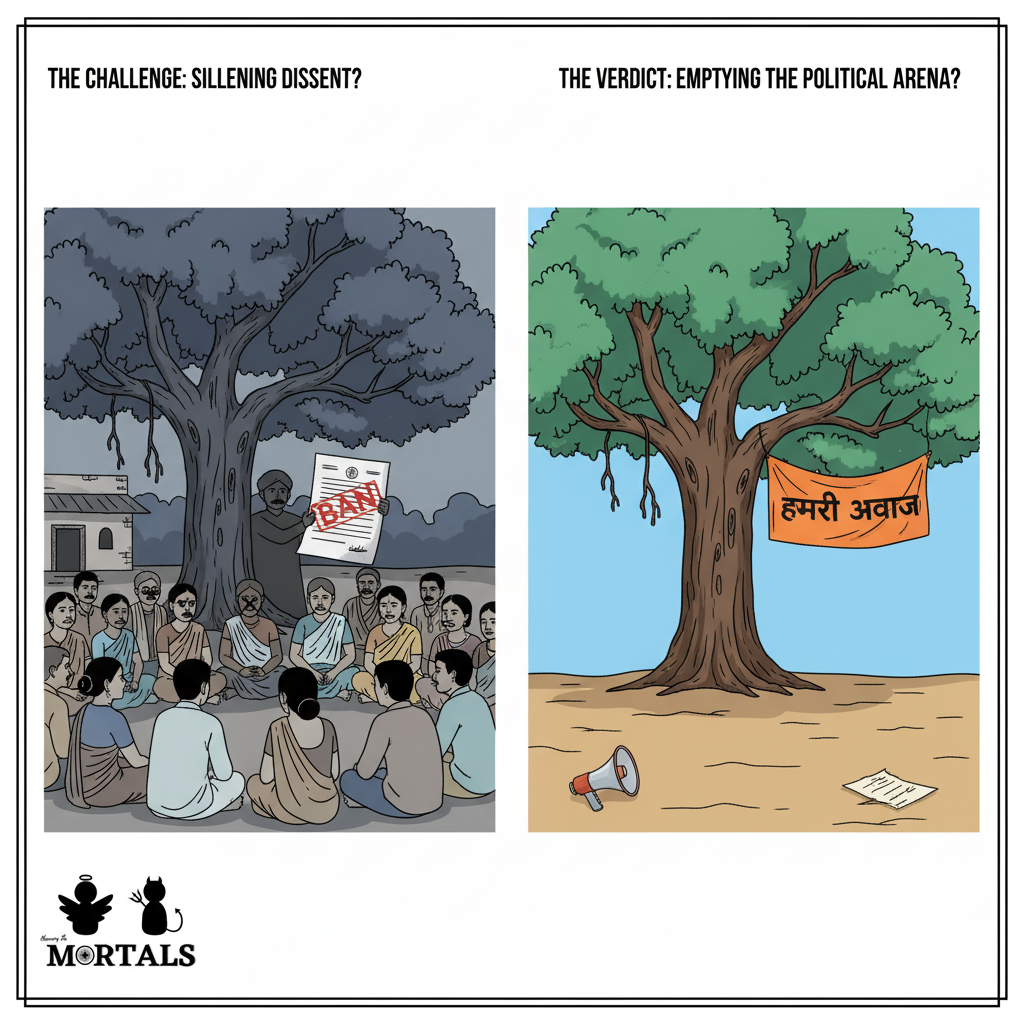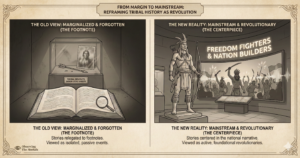In a move heralded as a progressive step towards a casteless society, the Uttar Pradesh government has banned all caste-based political rallies. The order, which follows a directive from the Allahabad High Court, seeks to promote “national unity” and “public order” by removing caste from the landscape of political mobilization. However, the ink on the notification was barely dry before opposition parties cried foul, accusing the government of hypocrisy and labeling the ban as a politically motivated attempt to silence the voices of marginalized communities. This case study delves into a deep political conflict, asking a crucial question: is the state’s attempt to erase caste from the public sphere a genuine social reform, or is it a savvy political maneuver to disarm its opponents?
The Information Box
Syllabus Connection:
- Paper 2: Chapter 3 (Caste System: Casteism, Caste in Indian Politics), Chapter 8 (Social Change & Movements)
- Paper 1: Chapter 4 (Political Anthropology: State, Power, Ideology), Chapter 4.3 (Legal Anthropology)
Key Concepts/Tags:
- Caste Politics, Identity Politics, State Power, Hypocrisy, Public Order, Marginalized Voices, Uttar Pradesh
The Setting: Who, What, Where?
The setting is the highly caste-conscious political landscape of Uttar Pradesh. Following a recent directive from the Allahabad High Court to curb caste glorification, the State Government has issued a sweeping notification. This order not only bans caste-based political rallies but also the display of caste on vehicles and public signboards, and mandates strict monitoring of social media. The key actors are the ruling BJP government, which frames the move as a reform, and the opposition parties (like the Samajwadi Party and Congress), who interpret it as a political attack.
The Core Argument: Why This Study Matters
This is not just a story about a ban; it’s a story about the deeply contested meaning and function of caste in public life.
- The State’s Official Narrative (Caste as a “Problem”): The government’s justification for the ban is that caste-based rallies are a threat to “public order” and “national unity.” In this official narrative, caste is framed as a regressive, divisive, and dangerous force that must be purged from the public sphere in order to create a harmonious, modern nation. This is a classic top-down, “state-centric” vision of social order.
- The Opposition’s Counter-Narrative (Caste as a “Tool for Mobilization”): The opposition parties present a starkly different interpretation. For them, and for the communities they represent, caste-based rallies are a legitimate and essential tool for political mobilization and social assertion, particularly for Bahujan, Dalit, and other marginalized groups. They see the ban not as a move against casteism, but as an attack on their primary method of organizing their constituents and voicing their demands.
- The Potent Charge of “Hypocrisy”: The core of the political conflict lies in the accusation of hypocrisy. The opposition’s claim that the ruling party itself has extensively used caste-based meetings and identity politics to win elections is a powerful one. This reframes the entire issue: from a principled stand against casteism to a strategic move to “kick away the ladder” after having used it to climb to power. The timing of the ban, just as the Samajwadi Party was planning a large “Gurjar rally,” fuels this interpretation.
The Anthropologist’s Gaze: A Critical Perspective
- The Two Faces of Caste Assertion: An anthropologist would immediately recognize the two fundamentally different functions of public caste displays.
- Dominant Caste Assertion: Often used to reinforce existing social hierarchies and project power (the “toxic masculinity” the High Court mentioned).
- Subaltern Caste Assertion: Used by marginalized groups as a tool for political consolidation, demanding rights, and challenging the established order. The critical anthropological insight here is that the government’s blanket ban fails to distinguish between these two forms. By banning all caste rallies, it risks disproportionately harming the marginalized groups who rely on this form of public mobilization the most, while dominant groups often have other, more powerful avenues (economic, media, institutional) to exert their influence.
- “Public Order” as a Tool of the State: The justification of maintaining “public order” is a classic rationale used by states everywhere to regulate or suppress dissent. An anthropological analysis would critically question whose “order” is being protected. Is it a neutral, civic order that benefits all, or is it the existing social and political order that benefits the current establishment?
- The State’s Contradictory Stance on Caste: This ban creates a fascinating paradox. On one hand, the state in UP is actively trying to erase caste from public and political life. On the other hand, the state in other parts of India (like Karnataka) is conducting detailed caste censuses to officially count and categorize these very identities for welfare and reservation. This reveals the deeply contradictory and ambivalent relationship the modern Indian state has with caste—it needs to count it to govern, but it wants to ban it to appear progressive and maintain control.
The Exam Angle: How to Use This in Your Mains Answer
- Types of Questions Where It can be used:
- “The role of caste in contemporary Indian politics is deeply contested. Analyze.”
- “What are the challenges faced by backward class movements in India?”
- GS-2: “Discuss the role of the executive and judiciary in initiating social reforms.”
- Model Integration:
- On Caste in Politics: “The role of caste in Indian politics is highly paradoxical. While the U.P. government recently banned caste-based rallies citing threats to ‘national unity,’ opposition parties criticized the move as hypocritical and an attempt to stifle the political mobilization of marginalized communities. This highlights the dual function of caste as both a divisive social force and an essential tool for democratic empowerment.”
- On State Power: “State actions are often subject to multiple interpretations, revealing underlying power dynamics. The U.P. government’s ban on caste rallies was officially framed as a social reform for public order, but was immediately perceived by its political opponents as a strategic move to weaken their caste-based support, highlighting the contested nature of state power.”
- For GS-2/Essay: “The recent ban on caste-based political rallies in Uttar Pradesh, following a High Court directive, exemplifies the complex interplay between judiciary and executive in social reform. While the stated goal is to curb casteism, the move has been heavily criticized for potentially silencing the legitimate political voice of marginalized groups, raising important questions about the motivations and consequences of state-led reforms.”
Observer’s Take
The ban on caste rallies in Uttar Pradesh is a textbook case of a policy that appears simple on the surface but is deeply complex and contested underneath. It forces us to confront an uncomfortable and critical question: when the state acts to erase caste from the public sphere, is it truly promoting a casteless society, or is it simply making the primary tool of marginalized political assertion illegal? The potent charge of hypocrisy from the opposition suggests that in the intricate dance of Indian politics, the line between social reform and political strategy is often intentionally blurred. This case study is a crucial reminder that in a democracy, it is vital to ask not just what is being done, but who is doing it, and why.





